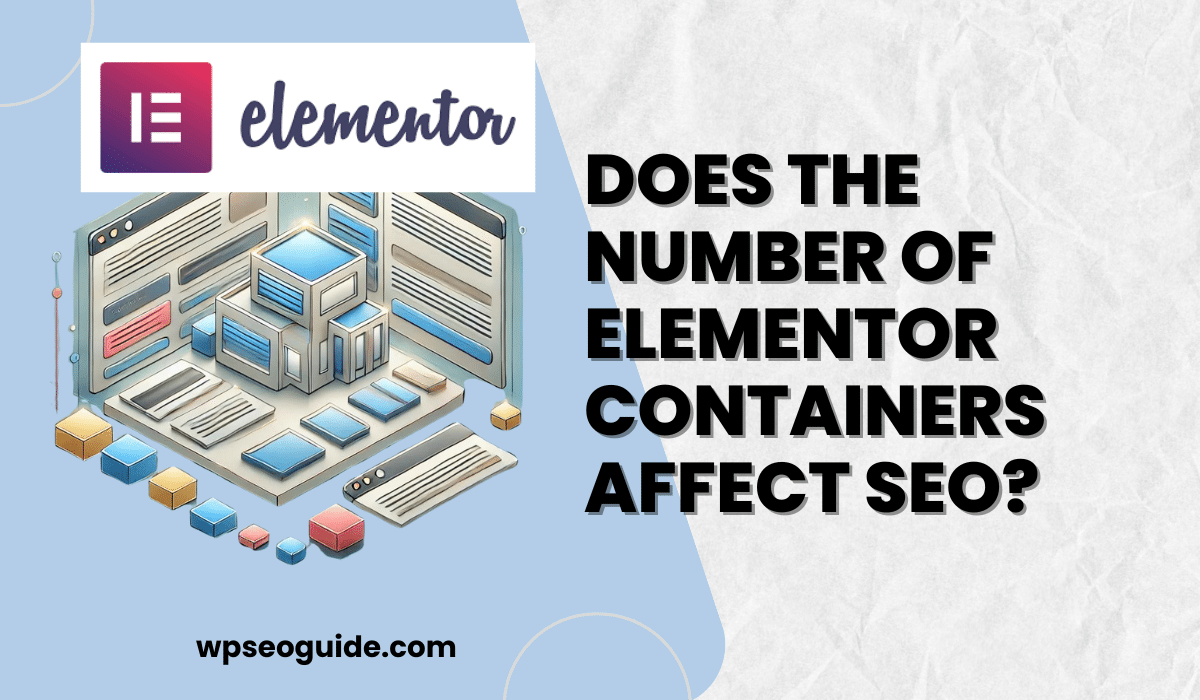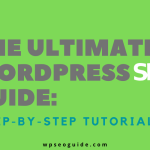Elementor, one of the most popular page builders for WordPress, offers a variety of design elements and features to create stunning, responsive websites. One of the key structural components within Elementor is the container. Containers help organize and layout your content, but as with any web development practice, overusing or mismanaging containers can have potential impacts on your website’s performance, and in turn, its SEO.In this article, we’ll explore the question: Does the Number of Elementor Containers Affect SEO? We’ll discuss how the number of containers used in your design can impact your website’s SEO and what best practices you should follow to ensure optimal performance.
Understanding Elementor Containers
Before diving into the SEO impact, let’s clarify what containers are in Elementor. Containers are structural blocks that hold various elements like text, images, and widgets. They help in organizing your content by creating sections, columns, and layouts. Elementor containers can be nested to form complex designs, giving web developers and designers full control over the website’s visual hierarchy.
While containers offer great flexibility in creating layouts, the way they are used can affect how the website loads and performs.
How Elementor Containers Can Affect SEO
SEO, or Search Engine Optimization, is all about optimizing your website so that it ranks well in search engine results. While factors such as content quality and backlinks are crucial, technical SEO aspects like website speed, user experience, and mobile-friendliness are equally important. Here are the ways in which the number of containers in Elementor can impact SEO:

1. Page Load Speed
One of the critical factors in SEO is page speed. Google uses page load time as a ranking factor, meaning that slow websites can struggle to rank higher on search engine results pages (SERPs). When using too many containers in Elementor, each additional container adds more code to the page (HTML, CSS, and JavaScript), increasing the size of the page.
An excessive number of containers may slow down page loading times by:
- Increasing HTTP requests as each container may trigger multiple background processes.
- Adding unnecessary layers of DOM elements, which makes the browser work harder to render the page.
- Creating bloated CSS styles that need to be loaded and processed.
A slower website can negatively affect your SEO as search engines prioritize faster-loading websites for a better user experience.
2. Code Bloat and Complexity
Each container adds a layer of code to your page, and while Elementor is efficient, overuse of containers can lead to code bloat. This increases the complexity of your page structure and can make it harder for search engine bots to crawl your site efficiently.
When search engine bots encounter overly complex or redundant code, it can slow down the crawling and indexing process. As a result, key content on your site may not be prioritized, reducing your chances of ranking well.
3. Mobile Optimization
Elementor allows you to design responsive websites easily, but too many containers can sometimes affect the layout’s responsiveness, especially on mobile devices. Google uses mobile-first indexing, meaning the mobile version of your site is what’s primarily considered for ranking.
When your site is filled with unnecessary containers, it may cause:
- Overlapping content or issues with how content is displayed on smaller screens.
- Difficulty maintaining a smooth user experience, which leads to higher bounce rates (another SEO ranking factor).
Ensuring that your website is mobile-optimized with minimal containers ensures a smoother experience, helping improve your mobile SEO rankings.
Read more about mobile-first indexing in our article
4. User Experience (UX)
Good user experience is a key SEO factor. If your website’s structure becomes confusing due to excessive use of containers, it can negatively affect user navigation and engagement. Search engines pay attention to user signals like time on site, bounce rates, and click-through rates. A cluttered layout caused by too many containers may frustrate visitors, leading them to leave your site quickly.
5. Rendering and Accessibility
More containers mean a more complex rendering process. This can impact how search engines and users experience your page. Search engines like Google now consider Core Web Vitals as a ranking factor, which includes metrics like Largest Contentful Paint (LCP) and Cumulative Layout Shift (CLS). If your containers are slowing down how quickly content appears on the screen or causing layout shifts, it can negatively impact your SEO.
Additionally, using too many containers can complicate accessibility, which is another indirect factor that affects SEO. Ensuring that screen readers and other assistive technologies can easily navigate through the website’s structure is essential for a good user experience.
Best Practices for Using Elementor Containers to Optimize SEO
Here are some practical tips to manage Elementor containers without compromising your SEO:
1. Use Containers Efficiently
Avoid adding containers just for the sake of design. Simplify your layouts by reducing the number of unnecessary containers and using more efficient design practices such as flexbox or grid layouts, which can reduce the number of containers required for complex layouts.
2. Minimize Nested Containers
Nesting containers can lead to excessive layers of code. Instead of deeply nested containers, use CSS and advanced styling options in Elementor to achieve the same results with fewer structural elements.
3. Optimize for Speed
Ensure that your website remains lightweight. Use performance-enhancing plugins like caching and minification to reduce the impact of additional containers on page load speed. Tools like Google PageSpeed Insights can help you identify areas where container-heavy designs may be slowing down your site.
4. Test for Mobile Responsiveness
Always test your site across multiple devices. Check how your containers affect layout, particularly on mobile screens, to ensure the best possible user experience. Adjust or remove containers that cause issues on smaller screens.
5. Monitor Core Web Vitals
Regularly monitor your site’s Core Web Vitals to ensure that adding containers doesn’t impact metrics like LCP, CLS, or First Input Delay (FID). Elementor provides tools to help you manage these vitals, but keeping them in check manually is always recommended.
Conclusion
While Elementor containers are essential for creating structured and visually appealing websites, the overuse of them can have negative impacts on your site’s SEO. Too many containers can slow down your site, affect mobile responsiveness, and create a poor user experience. By optimizing the number of containers and ensuring they don’t bloat your site’s code, you can maintain a fast, responsive website that ranks well in search engine results.
The key takeaway is to focus on simplicity and efficiency when using containers. As long as you manage them correctly, Elementor containers shouldn’t hinder your SEO efforts but rather enhance your ability to create a user-friendly, SEO-optimized website.





